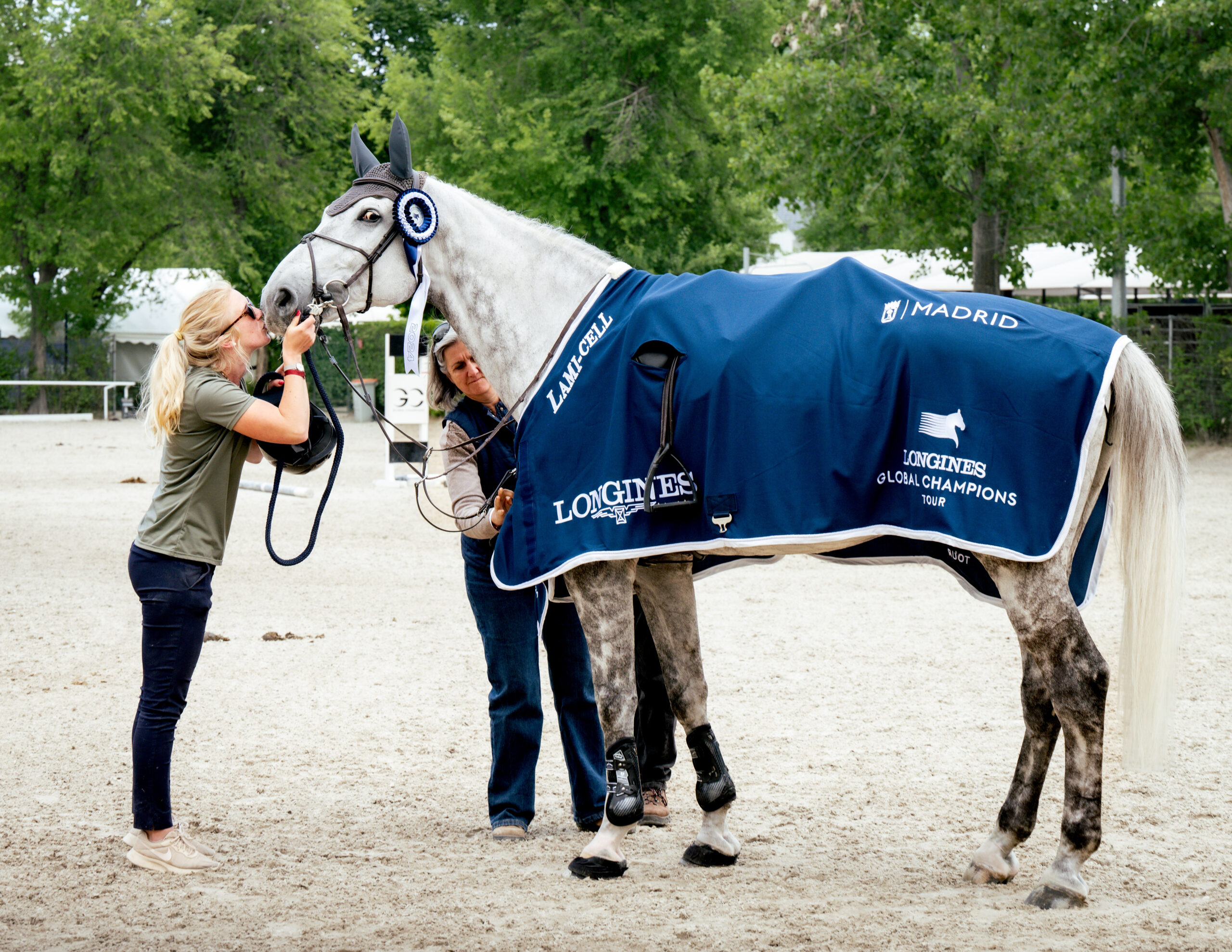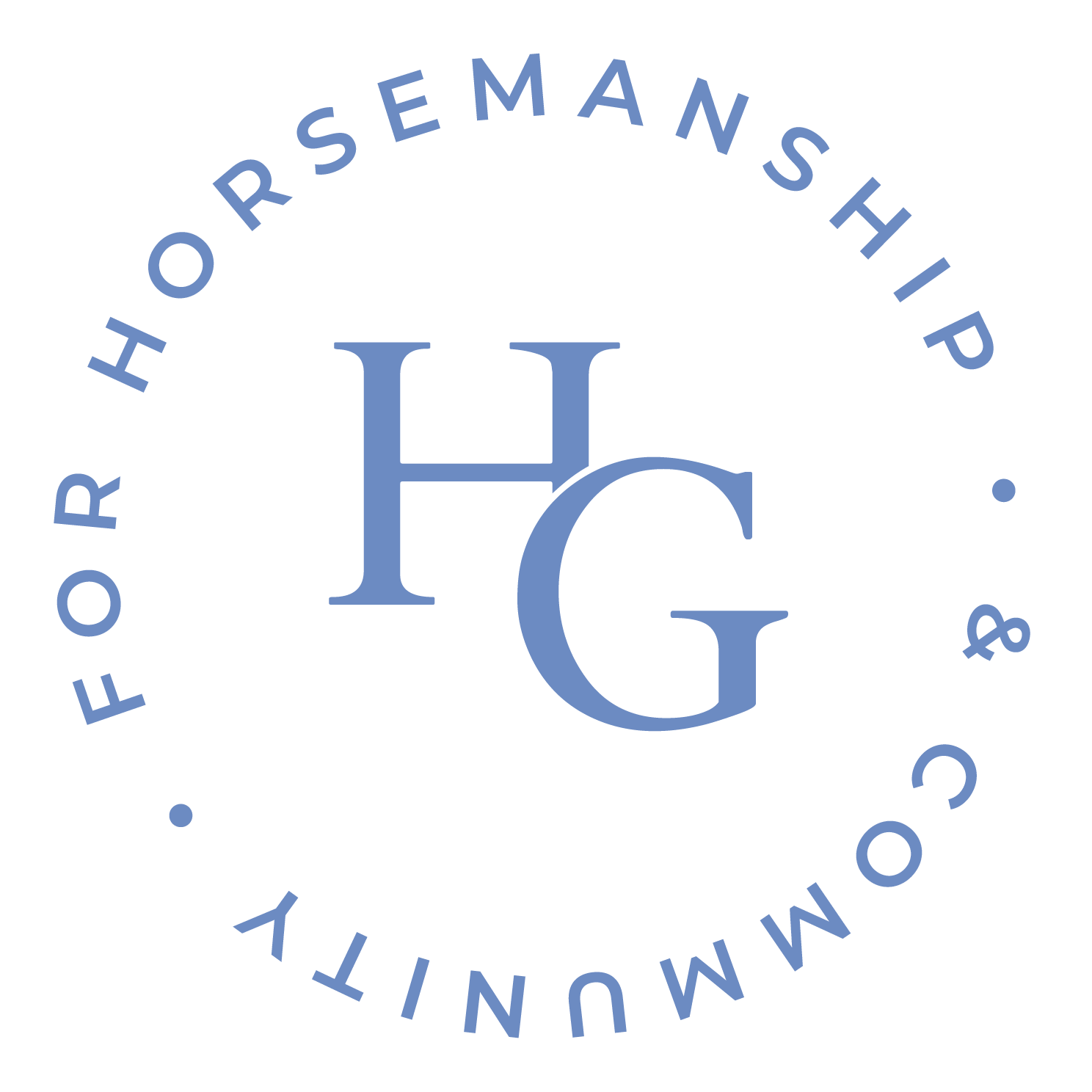Can you share with us some of your favorite moments from your nine years working for Christian?
It is a difficult question. We had a lot of special moments. I think one of the first special moments was when he won the three-star Grand Prix of Frankfurt in 2016. That was a very big thing for us because he wasn’t the well-known rider he is today. It may seem like a three-star show is not that important, but for us, it was really important.
Also, the European Championships in Riesenbeck in 2021 was special for us and a very important event for our stable. Working with Christian was a big success for the whole team. We won the silver medal with the team, and in the individual ranking, we came in fourth. I wasn’t his showgroom there, but at various times, I have been his home rider, home groom, and showgroom.
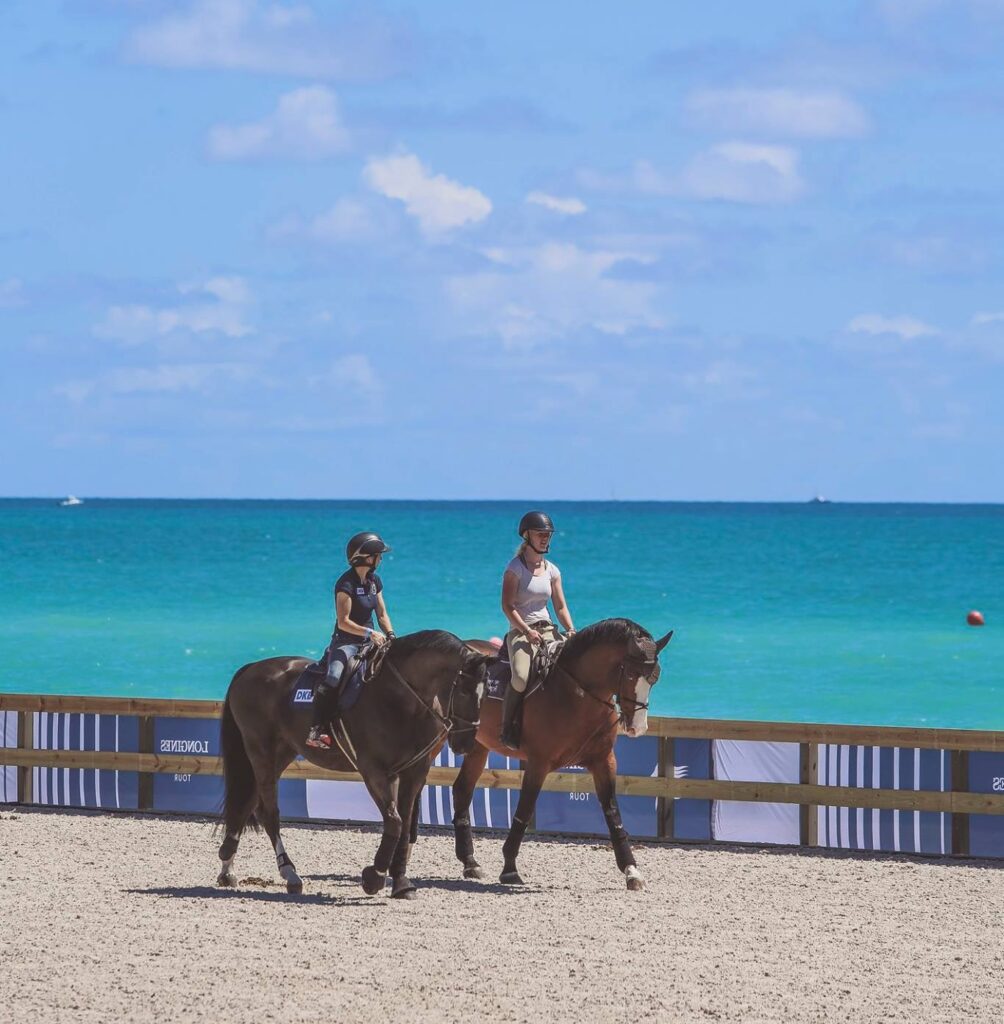
If I look at more recent moments, I would say that last year’s season was very good with the Global Champions Tour season; we kept going. We had a very chaotic start with Ludger having an accident and being injured to an almost surreal finish in GCT Doha with the team [Riesenbeck International] winning and Philipp Weishaupt and Christian being first and second in the grand prix. It felt almost like a fairytale, but it also shows what team spirit can do with Philipp Weishaupt, Eoin McMahon, and Ludger Beerbaum.
For sure, our success in Wellington, Florida [when we won the $500,000 Rolex CSI5* Grand Prix] means a lot to us, and that is also very recent. I am sure I will forget something.
From whom did you learn a lot?
I learned the most from the old grooms who have worked for the last 30 or 40 years for Ludger Beerbaum. We have a special situation in our stable. We are with a lot of people. All these grooms have long-term experience, and we’ve had the same system here since Ludger started this stable. I learned the most from the whole system at Ludger his stable. Marie Johnson is the long-term groom from Ludger; she has been here for almost 40 years. But also, Petra – she was the groom of Marco Kutscher and had already been here for many years; she was in Christian’s stable when I started. I think they had worked four years together already. I learned a lot from her, especially the basics. You learn here that less is more. We try to keep it simple. We always come up with new ideas– we try new things– but somehow, we always come back to the old system. 80% of the time, when we try to do something different, we go back to how we did it before.
It is really good to try new things with new machines or a new system, but we always return to keeping it simple. We go back to the daily system in which the horses come in the field, they go in the walker, and they are being ridden. For sure, I buy new ice boots or saddle pads, but somehow, I always return to the old stuff.
Lisa Fundis [Philipp Weishaupt’s groom], Aylin and Heather Field [Beerbaum’s groom], and I, we learned a lot together and from each other through the years since we all started within a few years from each other and traveled almost everywhere together.
You mention ice boots, which brings me to a different question: How do you take care of the legs after the horses have been jumping?
I try to use clay after the horses have jumped heavy classes, or I use Tendonil. You should also keep in mind that if you almost don’t use it at home, except if a horse has an accident or injury, you don’t have to use it at shows. If they jump normally at home, we have an easy care routine for the horses: just ice boots and bandages. I also keep it simple when the horses jump on the first day of a 1.40m class. When they jump 1.60m at a show, we do a bit more care on the legs. I ice the legs until they are cold. If they are not cold, I will ice them again. Then I wait a bit until they are dried up, and then I put Arnica or Tendonil, or we put clay on most of the time on the legs. Also, with our young horses, we keep it as simple as possible. They get shod when they compete on grass. We keep it simple until they reach an advanced level.
Are you more of a showgroom or a home groom?
When I started working for Christian, I was a home rider. A lot has changed, also in Christian’s stable. When I started working for him, we had 30 horses in our stable. Maybe we had 25 horses we could ride, and five retired horses that went to the field but were also on our list. Now, we have 12 horses in the stable with less people working for Christian. So a lot has changed.
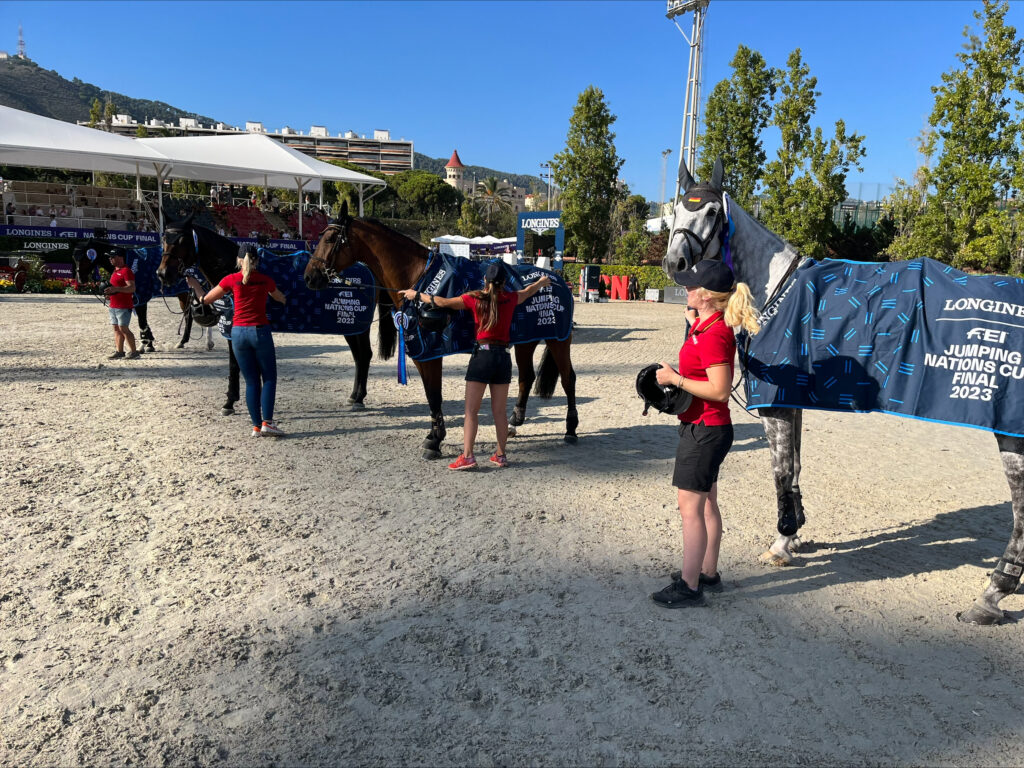
When I started, we already had a showgroom, and we had the earlier mentioned Petra, who worked for Marco Kutscher. I have learned a lot from her. When the showgroom stopped, I did a few shows. I do a lot of shows now, but I also like to be at home. There are a lot of showgrooms who hate to be at home. I never had this feeling. I really like to also be at home. Maybe not on a rainy October day, but I still enjoy being at home. I had a longtime colleague, Aylin Niemeyer – she was actually Christian’s showgroom for four or five years – she decided to work less. She works sometimes on the weekend or on a holiday.
She was with Christian in Oliva because I came back from Miami. During this time, I was mainly at home. It has only been since the last two years that I have regularly come with Christian to shows. At the same time, I also help manage the stable. We have good people in the stable, and we do everything together. I get a lot of help from other people. Everybody has their own responsibility.
What experience did you bring with you when you started with Christian? I noticed you did some show jumping yourself.
We always had horses at home when I was young. My brother and I were competing; we weren’t good enough to become really good, but we were also not too bad. When I was in school, there was nothing else, just horses. I have always had an interest in horses, and I liked riding. Maybe that is why I started as a home rider because I enjoyed riding so much. When you are 15,16 or 17, and you have your own horse, it feels like a dream. When I was younger, I always worked on the weekends in a stable close to my home. Or in a spring or summer break, as soon as school was finished, I drove somewhere where I could work in Sweden. They didn’t pay you so much because you could bring your horse and they helped you with the riding. That was how that system worked and how it started for me.
After I left school, I was in the Netherlands for a year and a half. I learned a lot there and worked really hard. It was a smaller stable, and they rode on two- and three-star level. I wanted to learn more and got the opportunity to go to Beerbaum Stables. The basic work is the same if you work at a five-star stable or a different stable. The horses still need to get food, the boxes still need to be mucked out, and they still need to be ridden or come out in the field. For sure, we have special things also with all the traveling. Also, a difference might be that you look more at the smaller details [when working at the higher level].
How is it for you to see the development of the horses through the years as they grow into the higher classes?
I really enjoy that. To be honest we don’t have that many horses anymore in our stable that we had from when they were really young and who are now on top level. When I think about what we have now in the stable… I think the only horse who came as a youngster is Mumbai. I think that everyone will agree that when he came, no one thought he would make it. Through the years he has developed like a really good horse. Mumbai came when he was almost 7 years old. Christian probably had the feeling that Mumbai was really good, and eventually, everybody was impressed.
Christian Kukuk talks about his longtime groom Sofie Karlsson:
Most of the youngsters we had in our stable are sold. I don’t remember exactly when Checker 47 came, but he was already 9 or 10. He already was jumping at two-star level, so he was not a youngster. The development that Checker 47 had in the last year is really special. He is also a very special horse to me.
Do you have horses with a special story in your stable?
The horse Creature is very special for us. He is now 13, and we have had him since he was 6 or 7. He is kind of a mascot of our stable. Christian is competing with him up to 1.50m. Anyone who meets Creature falls in love with him. He is fun to have at the shows, and he is also good to have at home. He is also a son of Colestus, and when he came, Christian was still riding Colestus.
How does a “normal” day look for you?
We start at 6 a.m. Straight away, we put a few horses on the walker, and then we feed the others. We muck out the boxes and bring the horses back in from the walker. The stable duties are finished around 7:30 a.m. Maybe we have already turned out a few horses in the field. We then have breakfast. We have, at the stables, a lady who makes breakfast for us. All the stables [on Ludger’s farm] are separated, and everybody has their own team, but we also work together. Christian comes at 8:00 a.m.; the home rider, and sometimes myself, will also ride a few horses. Some horses will go in the field, and others will go in the walker. It continues with tacking up and washing horses. Organizing other things; maybe the blacksmith will come. We work until 12 or 12:30, and then we have lunch until around 2 p.m. Christian comes again to ride, and then we do the afternoon duties. We muck out again; the horses come in the walker or in the field; all our horses get brushed; then the feeding, and between 5 p.m. and 6 p.m. we are finished.
We feed hay and hard feed in the morning at the same time. One person will feed the hay, and one will feed the hard feed. At the show, I might do it a bit differently, but at home, we have a system that works. If I don’t have many horses at the show, and I have a bit of time, I will give hay, muck out, refresh the water and then I give the hard feed. They can eat, and I can go for breakfast if there is enough time. If we are in Oliva, Spain, with eight horses, I do everything like we do it at home. It is really a different story when you have so many horses, and the first class starts at 8:30 a.m. You have to be a bit flexible with how the day looks like. Or at the Global Champions Tour, the horses need to be longed and ridden really early, and then the horses get their hay and hard feed when they come back to the stable. They get hard feed three times a day and hay three or four times. At shows, it is mostly four times, and at home three times: in the morning and then around 2 p.m./3 p.m. and then again at night check. The most important thing is to make it as easy as possible. Between 2 p.m. and 3 p.m., we muck out again, and then we give the hay also because the stable is already dirty. At home, we give bigger portions of hay so that they will be fine until night check at 8 p.m./9 p.m.
We have a couple of stallion paddocks we can use all year round, and we have some grass fields we can use when the weather allows us from April until October. I try to turn them out as much as possible; I would say between one and three hours. It depends on the horse and the situation.
Do you have some tips for grooming? Regarding tail care, hoof care, or skincare?
There are a lot of stables where the horses are being washed every day with shampoo. That is very rare here. We wash the manes and tail with shampoo. I wash the grey horses with shampoo or when they are really dirty. Our stable prioritizes that we brush the horses. Every afternoon all our horses get a good brush and hoof care. When we brush them, we make sure they have no cuts on the legs. We don’t use many products; brushing is more important. We also have horses who don’t like being brushed, so we brush them a bit quicker. We brush the tail every day, and we have shine spray in it. If we go to the show, we wash the tail.
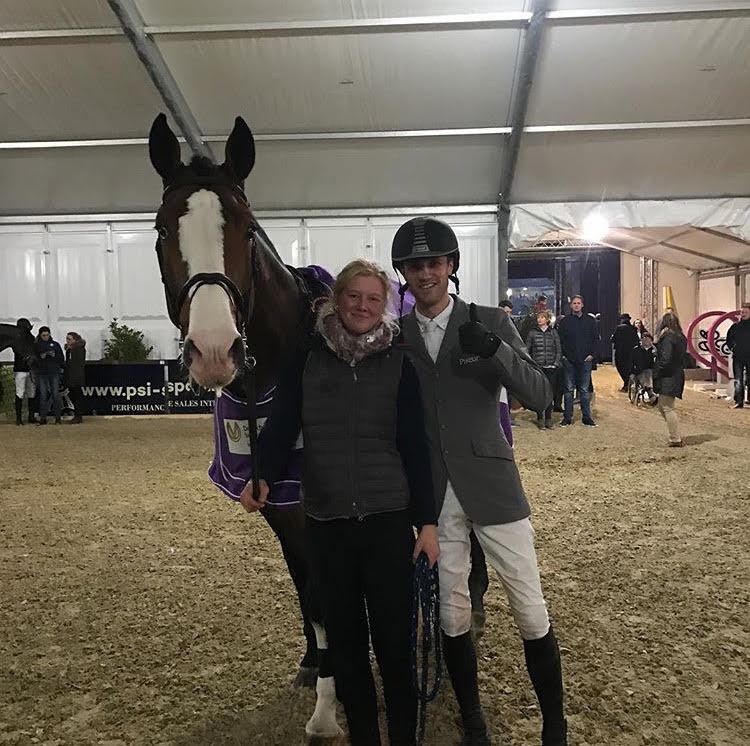
We have a really old system with the hooves. We put Nivea body lotion on the hooves. This has always been the system here. We never use hoof grease. I always make sure that the inside of the hoof is clean and that the frog is being taken care of. You can use the Nivea body lotion also for a lot of other things. When they have dry skin on their body, we always put Nivea on.
What do you find important in general?
Being a groom means working hard, and you miss a lot of other things. I see my family once or twice a year. I would really recommend doing it because you experience so many things that you would have never experienced in a normal life. We travel a lot, and we see many things that you normally would not get to see. This has given me so much! It is also important to keep it simple and to take time for other things; you do not have to go to every show if you are a showgroom. Also, don’t think that the rider or the horses can’t survive without you. That also destroys the working environment for me if only one person can do some things.
Everyone can’t know everything from the beginning. When I came, I didn’t know much compared to now, but the colleagues I had let me take responsibility so that I could become independent. And I’m still learning new things all the time.
Other people can’t grow if they don’t learn new skills. I made a lot of mistakes, and I still make a lot of mistakes today. I am also quite relaxed and open about making mistakes. Everybody should be able to learn new skills; one person does not need to think they can only do certain things. If you never get a chance to do and try things, then there will be, at one point, no more people who will develop. You won’t send new grooms to important shows like the Olympics, but they have to learn as well. Start with easy horses at low-key shows. With a good system, everything will run smoothly.
I am not sad when I am not on a show. I know the horses will do just as good with someone else. Young people or new staff need the opportunity to learn too. It is important to be able to help young people or new grooms to improve and that they learn from their mistakes. Sometimes, I see them doing something different than how I am used to doing it, but I don’t say it. They need to get their own experience.
Also, a lot of people leave their jobs when they could have become very good. We need to stay friendly to each other and avoid toxic environments. I think it is quite an important thing to say. I cannot imagine how it is if you work with people who won’t speak to you. I always push that we are happy with each other in the stable.
What do you think of HorseGrooms?
I think it is a really nice initiative for a lot of people that they get the recognition, and I like the interviews they did in Wellington. That was really nice. A lot of people came to me to say that it was good. But I always feel a little bit embarrassed to share it. I don’t like to put myself in the center of attention.
Featured photo courtesy of Longines Global Champions Tour.
